Philips SQM7441 Handleiding
Philips
Niet gecategoriseerd
SQM7441
Bekijk gratis de handleiding van Philips SQM7441 (2 pagina’s), behorend tot de categorie Niet gecategoriseerd. Deze gids werd als nuttig beoordeeld door 220 mensen en kreeg gemiddeld 4.5 sterren uit 110.5 reviews. Heb je een vraag over Philips SQM7441 of wil je andere gebruikers van dit product iets vragen? Stel een vraag
Pagina 1/2

A
BC
D
E
F
G
H
**
1 2 3
4
5
6
Engli s h
1 Important safety instructions
Caution
•Read these instructions before you begin. If you are unsure
of any part of the process, contact a professional contractor
or installer for assistance. Improper installation can result in
injury or damage.
•The wall or mounting surface must be capable of supporting
the combined weight of the mount and the display; if not, the
structure must be reinforced.
•Locate pipes, wires, or any other hazards in the wall where
you wish to install the mount before drilling.
•Safety gear and proper tools must be used. Failure to do so
can result in injury or damage.
•Two people are recommended for installation. Do not
attempt to lift a heavy display without assistance.
•Follow all instructions and recommendations regarding
adequate ventilation and suitable locations for mounting
your display. Consult the owner‘s manual for your par ticular
display for more information.
•This wall mount is intended for use only with the maximum
weight of 25 kg (55 lbs). Use with heavier than the maximum
weights indicated may result in instability causing possible
injury.
2 Tilt wall mount (for LCD, Plasma, and LED
displays)
What's in the box
Wall plate (x1)
Mount arm (x2)
User manual (x1)
Hardware kit (x1)
Hardward kit
A
M8 x 63 screw (x2)
B
Lag bolt washer (x2)
C
Concrete anchor (x2)
D
M4 x 12 screw (x4)
E
M6 x 12 screw (x4)
F
M8 x 12 screw (x4)
G
M6 washer (x4)
H
M8 washer (x4)
Tools required
• Phillips head screw driver
• Ratchet or driver with 13 mm (1/2”) socket
• Electric or portable drill
• 6 mm (1/4”) drill bit and stud nder for drywall
installation
• 10 mm (3/8”) Masonry bit for concrete installation
3 Installation
Mount to the drywall
Caution
For safety reasons, this mount must be secured to at least two
wood studs no less than 16” apart. The studs must be capable
of suppor ting the combined weight of the mount and display.
1 Use a high quality stud nder to locate two adjacent
studs where you wish to install your mount. Mark
both edges of each stud to help identify the exact
center.
Note
You must use the center of each stud to avoid cracking or
splitting the wood during installation.
2 Place the wall plate against the wall with the arrow
pointing up and level it using the integrated bubble
level.
3 While another person holds the wall plate in
position, mark two locations (one per stud) for
securing the mount to the wall (see Fig. 1).
4 Set the wall plate aside and drill a 6 mm (1/4”) pilot
hole at each marked location.
5 Place the wall plate back against the wall and attach
it using the lag bolts
A
and lag bolt washers
B
provided (see Fig. 2). Do not over-tighten these
bolts and do not release the wall plate until both
bolts are in place. Ensure that the wall plate remains
level after tightening the bolts.
Mount to the concrete wall
Caution
For safety reasons, the concrete wall must be capable of
suppor ting the combined weight of the mount and the display.
The manufacturer takes no responsibility for failure caused by
walls of insufcient strength.
1 Place the wall plate against the wall in the desired
location and level it using the integrated bubble level.
2 While another person holds the wall plate in place,
mark two locations on the wall for securing the
mount (see Fig. 3).
3 Set the wall plate aside and drill a 10 mm (3/8”) hole
at each marked location. Remove any excess dust
from the holes.
4 Insert a concrete anchor
C
into each hole so that
it is ush with the concrete surface (see Fig. 4). A
hammer can be used to lightly tap the anchors into
place if necessary.
Note
If the concrete wall is covered by a layer of plaster or drywall,
the concrete anchor must pass completely through the layer
to rest ush with the concrete surface.
5 Place the wall plate back against the wall and attach
it using the lag bolts
A
and lag bolt washers
B
provided (see Fig. 2). Do not over-tighten these
bolts and do not release the wall plate until all
bolts are in place. Ensure that the wall plate remains
level after tightening the bolts.
Attaching the mount arms to the display
Caution
Use extra care during this part of the installation. If possible,
avoid facing down your display as it may damage the viewing
surface.
Note
This mount comes with a selection of different screw
diameters and lengths to accommodate a wide variety of
display models. Not all of the hardware in the kit will be
used. If you cannot nd the appropriate screw size in the kit
provided, consult the manufacturer of your display for more
information.
1 Determine the correct diameter of screw to use
carefully by trying different size (M4, M6 and M8)
from the hardware kit (see Fig.5). Do not force
any of the screws – if you feel resistance, stop
immediately and try a smaller diameter screw.
2 Attach the mount arms to the back of your display
using the screws identied in steps 1. If you are using
M6 screws you will need to use M6 washers
G
. If
you are using M8 screws you will need to use M8
washers
H
Note
The mount arms must be attached with the tilt adjustment
screws facing towards the outer edges of the display (see Fig.
6). Otherwise, the tilt function cannot be accessed..
Final assembly
1 Loosen both tilt adjustment screws and set the tilt
to the desired angle. Make sure both arms are set
to the same angle before re-tightening both screws
securely.
2 With the help of another person, carefully lift your
display and place it on the wall plate. Gently apply
pressure to the bottom of your display so that the
clips on the mount arms lock to the wall plate. Do
not release the display until the mount arms have
securely hooked onto the wall plate.
Caution
Make sure that both arms are locked to the wall plate. For
safety reasons, this mount cannot be used unless both arms
are securely locked.
SQM7441
Register your product and get support at
www.philips.com/support
User manual
Manual del usuario
sqm7441_27_2L_um_150731.indd 1-3 31/07/2015 14:56:54

Español
1 Instrucciones de seguridad importantes
Precaución
•Lea estas instrucciones antes de comenzar. Si no está seguro
de algún paso del proceso, póngase en contacto con un
contratista o instalador profesional para obtener ayuda. Una
instalación incorrecta puede producir lesiones o daños.
•La pared o la supercie de montaje deben ser capaces de
aguantar el peso combinado del soporte de montaje y de la
pantalla. Si no es así, la estructura se debe reforzar.
•Localice las tuberías, cables y otros peligros en la pared en la
que desea instalar el soporte antes de comenzar a perforar.
•Debe utilizar un engranaje de seguridad y herramientas
adecuadas. Si no lo hace, se pueden producir lesiones o
daños.
•Se recomienda que la instalación la realicen dos personas.
No intente levantar una pantalla pesada sin ayuda.
•Siga todas las instrucciones y recomendaciones relativas a la
ventilación correcta y a las ubicaciones apropiadas para el
montaje de la pantalla. Consulte el manual de instrucciones
del modelo de su pantalla para obtener más información.
•Este soporte de montaje en pared se ha diseñado para su
uso con un peso máximo de 25 kg. El hecho de utilizarlo con
productos de mayor peso que el indicado puede dar lugar a
inestabilidad y producir lesiones.
2 Montaje en pared inclinado (para pantallas
LCD, LED y de plasma)
Contenido de la caja
Placa de pared (1)
Brazo de montaje (2)
Manual de usuario (1)
Kit de tornillería (1)
Kit de tornillería
A
Tornillos M8 x 63 (2)
B
Arandela para tirafondos
(2)
C
Taco para hormigón (2)
D
Tornillos M4 x 12 (4)
E
Tornillos M6 x 12 (4)
F
Tornillos M8 x 12 (4)
G
Arandela M6 (4)
H
Arandela M8 (4)
Herramientas necesarias
•
Destornillador plano Phillips
• Llave de trinquete o atornillador con boca de 13 mm
• Taladro eléctrico o portátil
• Broca de 6 mm y detector de montantes para
instalación en tabiques de yeso
• Broca para hormigón de 10 mm para instalación en
hormigón
3 Instalación
Montaje en tabiques de yeso
Precaución
Por motivos de seguridad, este soporte se debe jar al menos
a dos montantes de madera que no estén separados más
de 40 cm. Los montantes deben poder soportar el peso
combinado del soporte y la pantalla.
1 Utilice un detector de montantes de buena calidad
para encontrar dos montantes adyacentes en el
lugar en el que desea instalar el soporte. Marque
los dos bordes de cada montante para identicar el
centro exacto.
Nota
Debe utilizar el centro de cada montante para evitar que la
madera se agriete o se par ta durante la instalación.
2 Coloque la placa de pared contra la pared con la
echa hacia arriba y nivélela utilizando el nivel de
burbuja suministrado.
3 Mientras otra persona sujeta la placa de pared
en su lugar, marque las dos ubicaciones (uno por
montante) para jar el soporte a la pared (consulte
la imagen 1).
4 Retire la placa de pared y perfore un oricio guía de
6 mm en cada ubicación marcada.
5 Coloque la placa de pared de nuevo contra la pared
y fíjela mediante los tirafondos A y las arandelas
para tirafondos B que se incluyen (consulte la
imagen 2). No apriete los tirafondos en exceso
y no suelte la placa de pared hasta que ambos
tirafondos estén bien colocados. Asegúrese de que
la placa de pared permanezca nivelada después de
apretar los tirafondos.
Montaje en paredes de hormigón
Precaución
Por motivos de seguridad, la pared de hormigón debe poder
soportar el peso combinado del soporte y la pantalla. El
fabricante no asume responsabilidad alguna por las averías
provocadas por una resistencia insuciente de la pared.
1 Coloque la placa de pared contra la pared en la
ubicación que desee y nivélela utilizando el nivel de
burbuja suministrado.
2 Mientras otra persona sujeta la placa de pared en su
lugar, marque dos ubicaciones en la pared para jar
el soporte (consulte la imagen 3).
3 Retire la placa de pared y perfore un oricio de
10 mm en cada ubicación marcada. Elimine el exceso
de polvo de los oricios.
4 Introduzca un taco para hormigón C en cada
oricio hasta que estén a ras de la supercie de
hormigón (consulte la imagen 4). Si es necesario,
puede utilizar un martillo para golpear los tacos
suavemente hasta que estén en su lugar.
Nota
Si la pared de hormigón está cubierta por una capa de masilla
o yeso, el taco para hormigón debe atravesar completamente
la capa hasta que esté a ras de la supercie de hormigón.
5 Coloque la placa de pared de nuevo contra la pared
y fíjela mediante los tirafondos A y las arandelas
para tirafondos B que se incluyen (consulte la
imagen 2). No apriete los tirafondos en exceso y
no suelte la placa de pared hasta que todos los
tirafondos estén en su lugar. Asegúrese de que la
placa de pared permanezca nivelada después de
apretar los tirafondos.
Fijación de los brazos de montaje a la pantalla
Precaución
Tenga especial cuidado durante esta parte de la instalación.
Si es posible, evite colocar la pantalla bocabajo, p2-ya que podría
dañar la supercie de visualización.
Nota
Este soporte incluye una selección de tornillos de diferentes
diámetros y longitudes para adaptarse a una amplia variedad
de modelos de pantalla. No será necesario utilizar toda la
tornillería incluida en el kit. Si no encuentra el tornillo del
tamaño adecuado en el kit incluido, consulte al fabricante de
su pantalla para obtener más información.
1 Determine el diámetro correcto del tornillo que va a
utilizar probando con cuidado los diferentes tamaños
(M4, M6 y M8) del kit de tornillería (consulte
la imagen 5). No fuerce los tornillos. Si nota
resistencia, deténgase inmediatamente y pruebe
con un tornillo de otro diámetro.
2 Acople los brazos de soporte a la parte posterior
de la pantalla con los tornillos identicados en
el paso 1. Si utiliza tornillos M6, deberá usar las
arandelas M6 G. Si utiliza tornillos M8, deberá usar
las arandelas M8 H.
Nota
Los brazos de sopor te debe acoplarse con los tornillos de
ajuste de la inclinación orientados hacia los bordes exteriores
de la pantalla (consulte la imagen 6). De lo contrario, no podrá
utilizar la función de inclinación.
Montaje nal
1 Aoje los dos tornillos de ajuste de la inclinación
y ajuste la inclinación en el ángulo que desee.
Asegúrese de que los dos brazos estén ajustados en
el mismo ángulo antes de volver a apretar bien los
dos tornillos.
2 Con la ayuda de otra persona, levante con cuidado
la pantalla y colóquela en la placa de pared. Presione
ligeramente la parte inferior de la pantalla para
que las pinzas de los brazos de soporte encajen
en la placa de pared. No suelte la pantalla hasta
que los brazos de soporte se hayan enganchado
rmemente en la placa de pared.
Precaución
Asegúrese de que los dos brazos estén encajados en la placa
de pared. Por motivos de seguridad, este soporte no se puede
utilizar a menos que los dos brazos estén bien encajados.
4 Funcionamiento y ajuste
• Limpie periódicamente el soporte con un paño seco.
Inspeccione todos los tornillos y tirafondos de forma
periódica para asegurarse de que las conexiones no
se aojen con el tiempo. Vuelva a apretarlos si es
necesario.
• Para quitar la pantalla de la pared, tire hacia abajo de
ambos cables para soltar los brazos y levante con
cuidado la pantalla de la placa de pared.
5 Especificaciones
Tamaño de pantalla de 27” a 46”
Carga máxima 25 kg
Patrón de montaje máx. 400 mm x 400 mm
Rango de inclinación hasta 10° (inclinación hacia
abajo)
Perl 4,5 cm
4 Operation and adjustment
• Periodically clean your mount with a dry cloth.
Inspect all screws and hardware at regular intervals
to ensure that no connections have become loose
over time. Re-tighten as needed.
• To remove your display from the wall, pull down on
both cables to unlock the arms and carefully lift the
display from the wall plate.
5 Specifications
Display Size 27” to 46”
Maximum Load 25 kg (55 lbs)
Mounting
Pattern
max. 400 mm x 400 mm (15.7” x
15.7”)
Tilt Range up to 10° (tilting down)
Prole 4.5 cm (1.8”)
2015 © Gibson Innovations Limited.
All rights reserved.
This product has been manufactured by, and is sold
under the responsibility of Gibson Innovations Ltd.,
and Gibson Innovations Ltd. is the warrantor in
relation to this product.
Philips and the Philips Shield Emblem are registered
trademarks of Koninklijke Philips N.V. and are used
under license from Koninklijke Philips N.V.
UM_SQM7441
27_2L_V1.0
WK15315
sqm7441_27_2L_um_150731.indd 4-6 31/07/2015 14:56:54
Product specificaties
| Merk: | Philips |
| Categorie: | Niet gecategoriseerd |
| Model: | SQM7441 |
Heb je hulp nodig?
Als je hulp nodig hebt met Philips SQM7441 stel dan hieronder een vraag en andere gebruikers zullen je antwoorden
Handleiding Niet gecategoriseerd Philips

29 Juli 2025
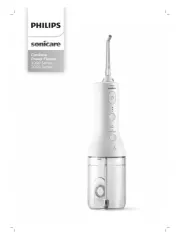
14 Juli 2025

6 Juli 2025
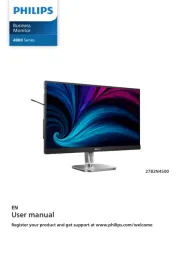
6 Juli 2025
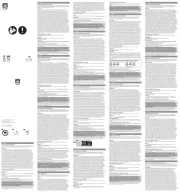
5 Juli 2025
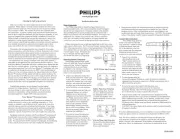
4 Juli 2025

4 Juli 2025
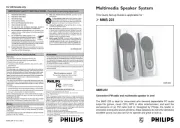
3 Juli 2025

3 Juli 2025
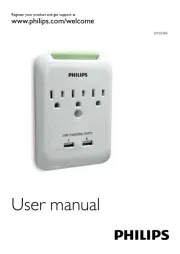
2 Juli 2025
Handleiding Niet gecategoriseerd
- Lastolite
- Vision
- Gourmetmaxx
- VigilLink
- PTZ Optics
- Jacuzzi
- Igloohome
- GMB Audio
- Kiano
- Global Water
- Turbotronic
- Audiolab
- Phonak
- Duro
- Futurelight
Nieuwste handleidingen voor Niet gecategoriseerd
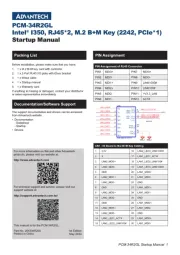
30 Juli 2025
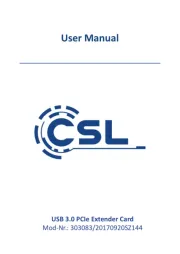
30 Juli 2025
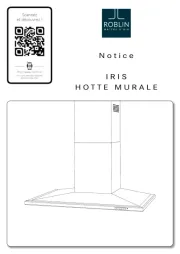
30 Juli 2025
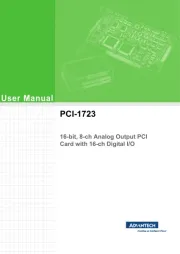
30 Juli 2025
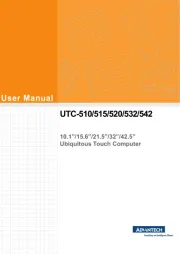
30 Juli 2025
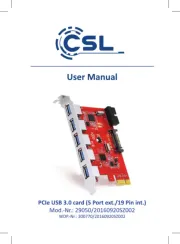
30 Juli 2025

30 Juli 2025
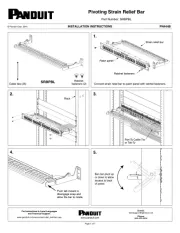
30 Juli 2025
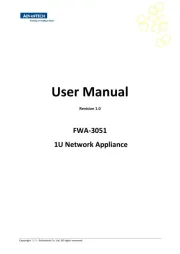
30 Juli 2025
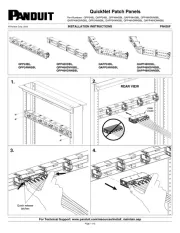
30 Juli 2025